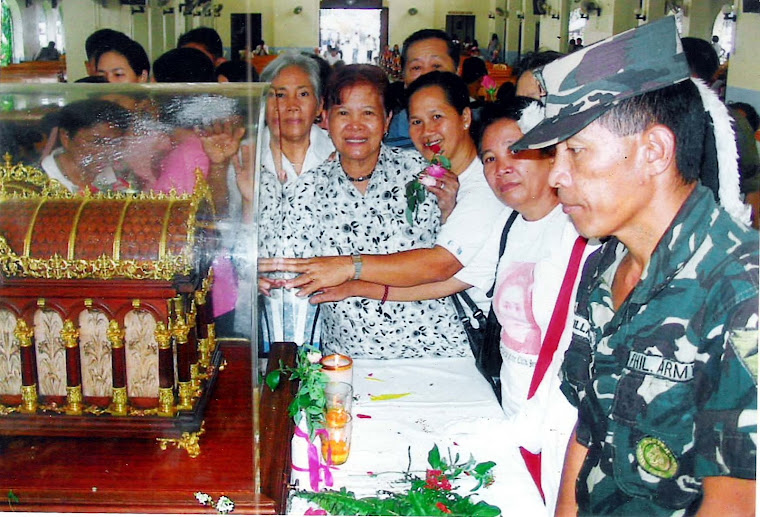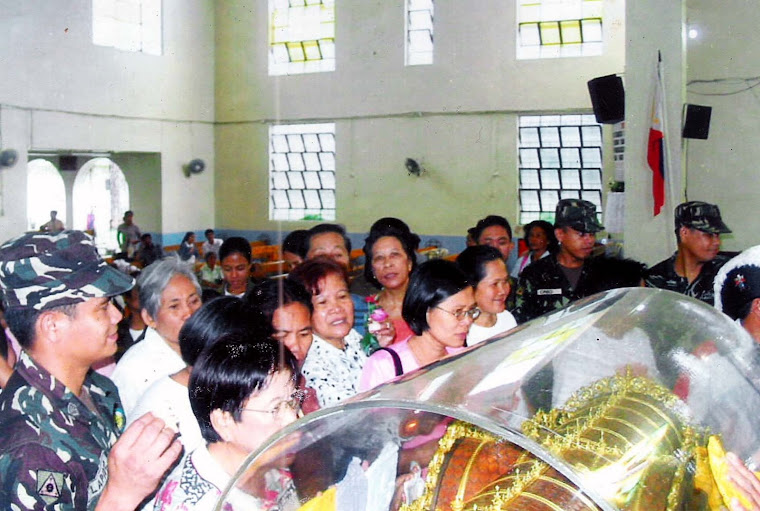 MyHotComments
MyHotComments
Saturday, December 26, 2009
Tuesday, December 8, 2009
Happy Feast Day Philippines!

In 1854, Pius IX solemnly proclaimed: “The most Blessed Virgin Mary, in the first instant of her conception, by a singular grace and privilege granted by almighty God, in view of the merits of Jesus Christ, the savior of the human race, was preserved free from all stain of original sin.”
It took a long time for this doctrine to develop. While many Fathers and Doctors of the Church considered Mary the greatest and holiest of the saints, they often had difficulty in seeing Mary as sinless—either at her conception or throughout her life. This is one of the Church teachings that arose more from the piety of the faithful than from the insights of brilliant theologians. Even such champions of Mary as Bernard and Thomas Aquinas could not see theological justification for this teaching.
Two Franciscans, William of Ware and Blessed John Duns Scotus, helped develop the theology. They point out that Mary’s Immaculate Conception enhances Jesus’ redemptive work. Other members of the human race are cleansed from original sin after birth. In Mary, Jesus’ work was so powerful as to prevent original sin at the outset.
Comment:In Luke 1:28 the angel Gabriel, speaking on God’s behalf, addresses Mary as “full of grace” (or “highly favored”). In that context this phrase means that Mary is receiving all the special divine help necessary for the task ahead. However, the Church grows in understanding with the help of the Holy Spirit. The Spirit led the Church, especially non-theologians, to the insight that Mary had to be the most perfect work of God next to the Incarnation. Or rather, Mary’s intimate association with the Incarnation called for the special involvement of God in Mary’s whole life. The logic of piety helped God’s people to believe that Mary was full of grace and free of sin from the first moment of her existence. Moreover, this great privilege of Mary is the highlight of all that God has done in Jesus. Rightly understood, the incomparable holiness of Mary shows forth the incomparable goodness of God.
http://www.americancatholic.org/features/saints/saint.aspx?id=1223
Thursday, December 3, 2009
Happy Feast Day Kabankalan City!


Francis Xavier, 24 at the time, and living and teaching in Paris, did not heed these words at once. They came from a good friend, Ignatius of Loyola, whose tireless persuasion finally won the young man to Christ. Francis then made the spiritual exercises under the direction of Ignatius, and in 1534 joined his little community (the infant Society of Jesus). Together at Montmartre they vowed poverty, chastity and apostolic service according to the directions of the pope.
From Venice, where he was ordained priest in 1537, Francis Xavier went on to Lisbon and from there sailed to the East Indies, landing at Goa, on the west coast of India. For the next 10 years he labored to bring the faith to such widely scattered peoples as the Hindus, the Malayans and the Japanese. He spent much of that time in India, and served as provincial of the newly established Jesuit province of India.
Wherever he went, he lived with the poorest people, sharing their food and rough accommodations. He spent countless hours ministering to the sick and the poor, particularly to lepers. Very often he had no time to sleep or even to say his breviary but, as we know from his letters, he was filled always with joy.
Francis went through the islands of Malaysia, then up to Japan. He learned enough Japanese to preach to simple folk, to instruct and to baptize, and to establish missions for those who were to follow him. From Japan he had dreams of going to China, but this plan was never realized. Before reaching the mainland he died. His remains are enshrined in the Church of Good Jesus in Goa.
http://www.americancatholic.org/features/saints/saint.aspx?id=1218






















